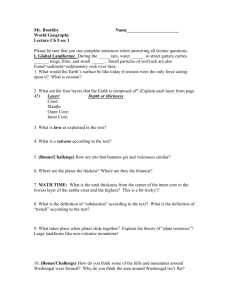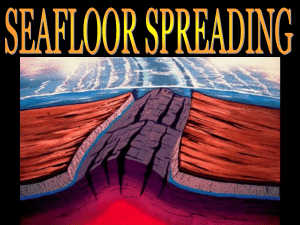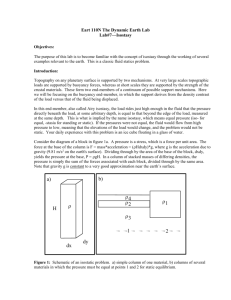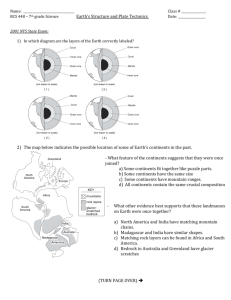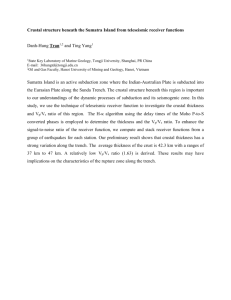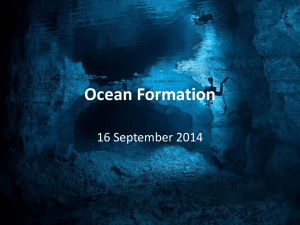12.002 Physics and Chemistry of the Earth and Terrestrial... MIT OpenCourseWare Fall 2008 .
advertisement
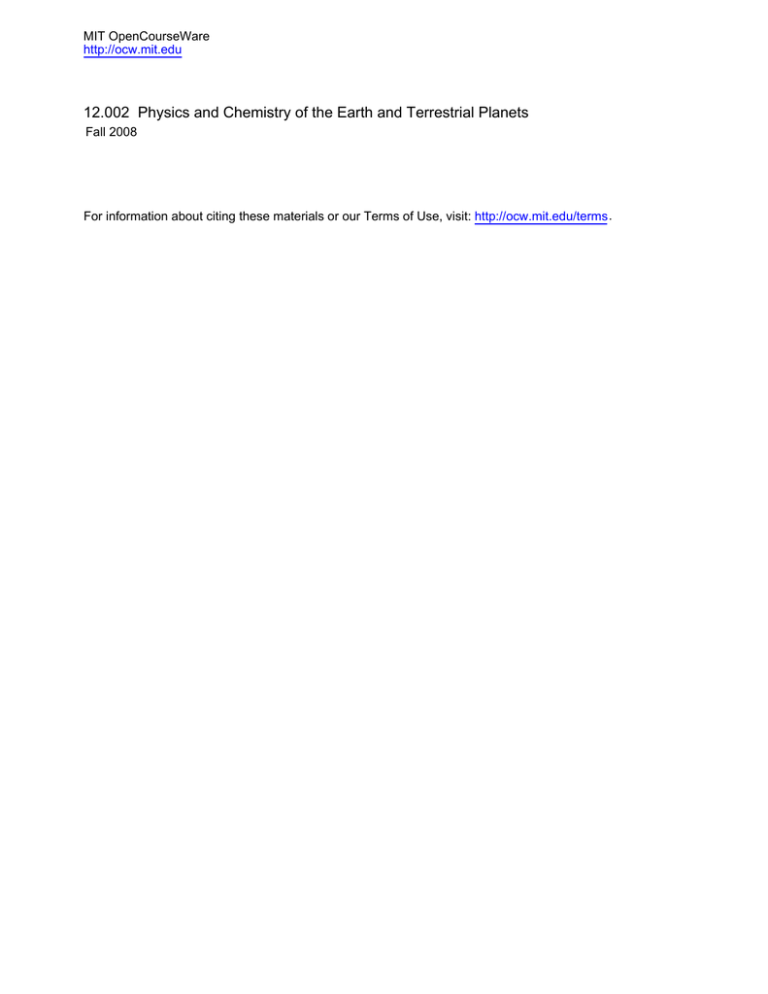
MIT OpenCourseWare http://ocw.mit.edu 12.002 Physics and Chemistry of the Earth and Terrestrial Planets Fall 2008 For information about citing these materials or our Terms of Use, visit: http://ocw.mit.edu/terms. 12.002 Physics and Chemistry of the Terrestrial Planets Fall 2008 Professors Leigh Royden and Benjamin Weiss Problem Set #8: Isostasy due Friday Nov 21 in class Problem 1. The Tibetan plateau is the site of continental collision between India and Eurasia and extensive post-collisional convergence and crustal shortening. Its surface is 5 km above sea-level. Gravity data shows that the plateau is isostatically compensated. a) Compute the thickness of the crust under the plateau assuming that the plateau is Airy-compensated. Also assume that the density and thickness of crust beneath adjacent areas that are at sea-level are 2800 km/m3 and 35 km respectively (and that the density and thickness of the lithospheric mantle beneath the two areas is the same). b) Assume that instead of Airy-compensation you have Pratt compensation, so that the crust is only 40 km thick with a 5 km elevation. Assume that the density of the upper 20 km of the crust is 2800 kg/m3, but that the density of the lower 20 km of crust is sufficiently low to put the plateau into complete isostatic compensation. Compute the density of this lower crustal layer. c) Which of these end-member possibilities seems more reasonable to you based on what you know about rheology, tectonics, and anything else you have learned in this class? Problem 2. At: http://www.solarviews.com/cap/venus/vidven2.htm you can view a 3D image of Venus’ topography. The topographic interval between the lowest and highest points on Venus (measured relative to the oblate spheroid that best fits the geometry of the planet) is 13 km. If the crustal thickness under the lowest elevation regions of Venus is zero, what is the crustal thickness under the highest elevation regions? (Assume Airy isostasy, a crustal density of 2850 kg/m3 and a mantle density of 3300 kg/m3.) How does your answer change if you assume a minimum crustal thickness of 20 km under the low elevation regions? Problem 3. The diagram below shows a tectonic system consisting of 5 plates. Some of the boundaries, as shown by double lines, are spreading ridges. Others, as shown by single light lines, are transform faults. The (total) spreading rates across some of the spreading ridges between plates are known: vAB=50 mm/yr, vBC=47 mm/yr, vCD=42 mm/yr, vAD=43 mm/yr, vDE=28 mm/yr. The tectonic system enters a continent (shading) where the relative rates of motion cannot be measured, although the approximate position of the plate boundary is known and shown by the wide shaded line. Remembering that spreading ridges spread orthogonally and symmetrically and assuming no rotation between plates, only translation: a) Construct the velocity diagram for plates A, C and D to find the spreading rate across the ridge separating plates A and C. b) What kind of plate boundary exists at point z? Do you expect high, low or neutral topography along this zone? Explain why. c) Construct the velocity diagram for plates A, D and E to find rate of relative motion and type of plate boundary at point x. Do you expect high, low or neutral topography along this zone? Explain why. d) Construct the velocity diagram for plates A, B and E to find rate of relative motion and type of plate boundary at point y. Do you expect high, low or neutral topography along this zone? Explain why.
